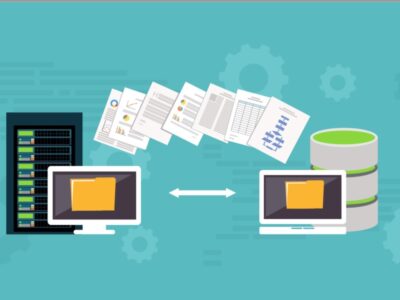For decades, Apple products such as Mac computers carried the reputation that they were impervious to viruses and malware. In fact, this became one of the biggest rallying cries of Mac purists.
Earlier this year, it was revealed that Macs are now more prone to malware attacks than PCs for the first time ever. Part of the problem? Mac users aren’t paying attention to malware removal because they assume they’re in safe hands.
Now that you know that your Mac isn’t a fortress, you’re probably wondering whether or not your Mac is infected and what you can do if it is.
Read on for five tips that will help you navigate malware removal on your Mac.
1. Understand Where Malware Comes From
One reason that Macs were once considered immune to malware is the fact that Macs come equipped with so many useful software programs that theoretically, users don’t need to outsource for the programs they’re looking for. However, many Mac users do end up running or downloading software from outside sources, and this is where the trouble often begins.
One of the most common viruses a Mac will contract is the dreaded adware, also known as “potentially unwanted programs.” They have a tendency to latch onto programs a user purposefully downloads in order to infiltrate the computer. They tend to lead to excessive pop-ups and internet redirects to advertisements and spam.
Ultimately, you should always make sure that you do your research before downloading any apps or programs that aren’t Apple-generated. In addition, installing an antivirus program can catch malware in its tracks and stop you from allowing it onto your computer.
2. Recognize the Signs of a Computer Virus
Not unlike a real virus, computer viruses often reveal themselves through a set of “symptoms.” Keep an eye out for these signs and symptoms when using your Mac so that you can act quickly if it does become infected.
One of the most noticeable symptoms is the system slowdown. You may notice that it takes your Mac twice as long to turn on and that your apps and internet run much slower than they used to.
You may also find that your programs are more prone to crashing, causing you to lose unsaved data–and sometimes even corrupt your saved files.
Ultimately, if your Mac is “acting strange,” especially when it isn’t an older model, you have good reason to believe that you’re dealing with malware.
3. Prevent Further Data Theft Upon Suspecting Malware
If you suspect malware, act fast. The first thing you should do is disconnect from the internet. This will cut the cord between your computer and the malware server that may be collecting your data. It will also stop the malware from spreading further.
If you need to connect to the internet to download a malware removal scanner, do so quickly. As soon as the download is complete, disconnect once more.
Then, it’s time to put your Mac into Safe Mode. Safe Mode allows you to run your computer using only the minimum amount of software necessary, which means that you can turn it on without allowing the malware to continue running.
To enter Safe Mode, restart your Mac, and as soon as it begins to boot up, hold down the Shift key. After the Apple logo appears, followed by the login window, release the Shift key. This will tell your Mac that you are logging in in Safe Mode.
When you’re operating a malware-infected Mac, do not log in to any of your personal accounts.
4. Verify Malware Presence With Activity Monitor
Now that you’re operating in Safe Mode, you can verify the presence of malware with Apple’s built-in Activity Monitor. The Activity Monitor shows any processes running on your computer and how they are affecting your computer’s performance and activity.
Check the CPU tab to find out which programs appear to be working overtime. Malware tends to take up space in unusual places, so this can help you track it down. If you find an unwanted or suspicious program or application, you can shut it down and delete it from your Finder menu.
5. Use a Malware Removal Scanner
The Activity Monitor can help you verify and even locate the malware that is harming your Mac. However, it is not a malware removal program and can’t take care of the malware automatically.
Any malware that made it onto your Mac did so because it slipped past the anti-virus programs you may already have in place. Plus, there are actually quite a few viruses out there that disguise themselves as anti-virus or malware removal programs.
Take a look at this article to find a program for malware removal Mac is able to run. The last thing you want is to end up with more malware because you were trying to quickly treat the malware you already have.
Don’t Let Malware Wipe Out Your Mac
After a few decades of certainty that Macs are impervious to malware, more and more Mac users are finding that this isn’t the case. Recognizing that your Mac can be infected with malware is one of the first steps toward protecting your data. Make sure you know how to navigate malware removal on your Mac, how to recognize an infected computer, and what malware removal programs are safe to run.
Looking for more tech news, tips, and updates? Take a look at our section devoted to all things tech and stay in the know.








Comments